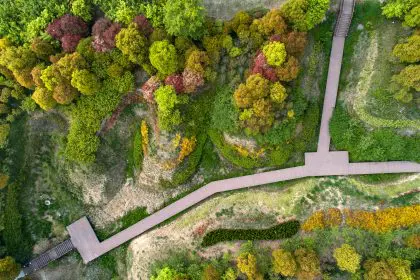Paris has long been celebrated for its iconic landmarks, world-class cuisine, and rich artistic history. But beyond the traditional sites of the Eiffel Tower and the Louvre, the city holds a deep connection to Black history. Paris has been a beacon for Black culture, from the Harlem Renaissance writers who found inspiration in its cafes to the jazz musicians who filled the nightclubs with their vibrant music. Exploring these hidden gems offers a fresh perspective on the city while honoring the profound contributions of Black individuals to its cultural tapestry.
Embarking on this journey is more than just sightseeing; it’s about reconnecting with the stories that shaped the African diaspora, paying tribute to Black excellence and feeling the emotional weight of the struggles and triumphs of Black icons. Here are ten must-see locations that will make your Black history tour in Paris unforgettable.
1. Sorbonne University
At the heart of the Latin Quarter stands Sorbonne University, where many African-American intellectuals and artists — such as James Baldwin and Richard Wright — spent time. The university became a place of refuge and intellectual exploration for Black scholars and writers who sought freedom from the racial constraints they experienced back home. Walking the grounds where these figures once stood evokes a sense of pride and a deeper appreciation for their contribution to literature and thought.
2. Place Josephine Baker
Few figures are as iconic in Paris’s Black history as Josephine Baker. An entertainer, civil rights activist and member of the French Resistance during World War II, Baker broke barriers on stage and in life. Place Josephine Baker — located in the 14th arrondissement — is a tribute to her remarkable life. Visiting this square and learning about her legacy provides an emotional connection to a woman who used her fame to fight for equality and justice.
3. Institut du Monde Arabe
While Le Musée Dapper closed its physical doors in 2017, the Institut du Monde Arabe continues to celebrate the connections between Arab and African cultures. Located in the 5th arrondissement, this institution offers exhibitions, concerts, and cultural events that showcase the richness of Arab-African heritage. Visiting the Institut du Monde Arabe provides insight into the diverse influences that have shaped Paris, acknowledging the interconnectedness of African and Arab histories.
4. Rue Blomet
Paris became the unofficial capital of jazz in the 1920s, largely due to the influence of Black American musicians like Sidney Bechet. Rue Blomet — home to the famous Bal Nègre — was a hotspot for jazz lovers. This nightclub brought together Parisians and African-American expatriates who found a sense of freedom and joy through music. Walking down Rue Blomet allows visitors to imagine the vibrant nights of music and dance that once filled the air, reminding us of the power of art to bridge cultures.
5. Espace Reine de Saba
Located in the 10th arrondissement of Paris, Espace Reine de Saba is a cultural center dedicated to the history and cultures of the Horn of Africa, particularly Ethiopia. The center hosts exhibitions, lectures, and cultural events that highlight the rich heritage of African civilizations. Visiting Espace Reine de Saba provides a deeper understanding of African history, art, and traditions, offering an opportunity to engage with the diverse cultures that have influenced and enriched Paris over the centuries. This place serves as a bridge between African and French cultures, fostering a sense of unity and appreciation for African contributions to the global narrative.
6. Les Deux Magots
This legendary café in Saint-Germain-des-Prés was frequented by Black writers and intellectuals during the mid-20th century. Writers like James Baldwin, Chester Himes and others used Les Deux Magots as a space to gather, write and discuss the social and racial issues of their time. Sitting at the same tables they did offers an emotional reflection on the power of words and activism. The café remains a symbol of resistance, creativity and community for Black intellectuals.
7. The Pantheon
The Pantheon — one of Paris’s most revered monuments — is the final resting place of Alexandre Dumas, the celebrated author of The Three Musketeers and The Count of Monte Cristo. Dumas — of mixed African heritage — rose to fame through his literary talents despite the racial prejudices of his time. The honor of being buried in the Pantheon speaks to the cultural impact Dumas made on France. Visiting his grave is a humbling experience, as it highlights the triumph of creativity over adversity.
8. Château de Monte-Cristo
Located just outside Paris, Château de Monte-Cristo is the former home of Alexandre Dumas. The estate — named after one of his most famous novels — is now a museum dedicated to his life and work. Touring the grounds and learning about his accomplishments adds another layer of appreciation for his role in shaping French literature. The emotional resonance of seeing where Dumas lived and created provides a more personal connection to the man behind the iconic stories.
9. Rue de l’Abbé-Grégoire
Rue de l’Abbé-Grégoire is named after Henri Grégoire, an 18th-century French abolitionist and advocate for the rights of Black people. Abbé Grégoire fought tirelessly for the emancipation of enslaved people in France’s colonies and the equal treatment of people of color. Walking down this street is a powerful reminder of the fight for justice that transcended national boundaries. It’s a place where history comes alive, and visitors are reminded of the resilience and determination of those who fought for equality.
10. La Maison des Cultures d’Afrique
La Maison des Cultures d’Afrique (MACA) in Paris promotes African art and culture. MACA regularly hosts exhibitions, performances, and workshops that showcase the diverse artistic expressions of the African continent. Visiting MACA offers an enriching experience, allowing visitors to engage with contemporary African culture in various forms, from visual arts to music and dance.
Reflecting on the journey through Black history in Paris
The Black history tour of Paris offers a window into a rich and diverse heritage often overlooked in traditional narratives of the city. From the intellectual gatherings at La Sorbonne to the jazz-filled nights on Rue Blomet, these locations stand as a testament to the profound influence Black individuals have had on Parisian culture. Each site on this tour tells a story of resilience, creativity and the quest for justice that still resonates today.
As you walk through the streets and visit these locations, you’re not just observing history — you’re feeling it. The emotional weight of the past, the struggles and victories, the art and activism all come together to create an experience that leaves a lasting impact. This tour isn’t just about visiting landmarks; it’s about understanding the contributions of Black culture and history to one of the world’s most famous cities.
This story was created using AI technology.











